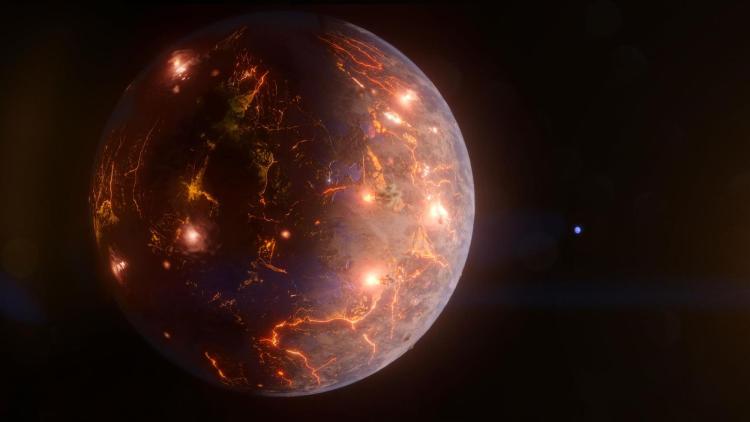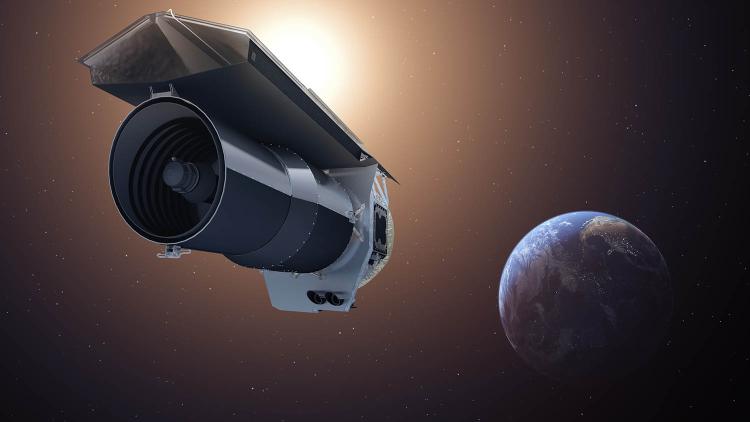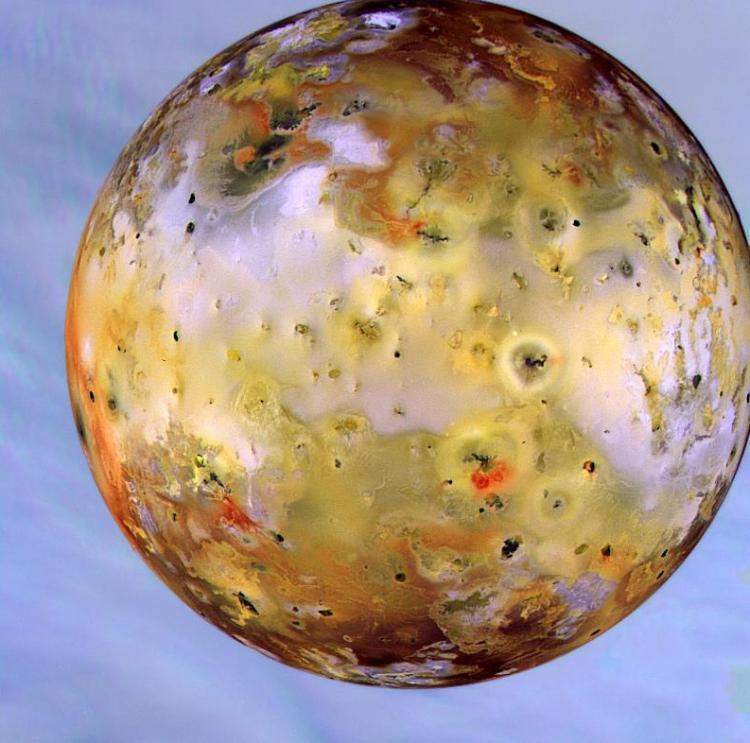Newly discovered planet is the size of Earth, but may be covered in volcanoes

Artist's depiction of a newly disovered rocky planet, called LP 791-18d, which may be covered in volcanoes. A second planet, LP 791-18c, orbits in the background. (Credit: NASA’s Goddard Space Flight Center/Chris Smith, KRBwyle)
Welcome to Earth, extreme edition.
In a new study, a team of astrophysicists, including two researchers at CU Boulder, have discovered a small and rocky world orbiting a star far from Earth—similar to our own planet, perhaps, but much more chaotic.
The new planet is almost the same size as Earth and swings around its home star, which is called LP 791-18, about once every three Earth days. Average temperatures there could spike to more than 250-degrees Fahrenheit, while eruptions of gases and lava might spew across the planet’s surface.
“This planet could be a very turbulent environment with a lot of volcanoes,” said William Waalkes, a co-author of the new study and doctoral student in the Department of Astrophysical and Planetary Sciences at CU Boulder. “Its dayside would likely get very hot, and if the planet has an atmosphere, intense winds could blow toward the nightside.”

Artist's depiction of NASA's Spitzer Space Telescoope, which operated from 2003 to 2020. (Credit: NASA)

LP 791-18d could have a lot in common with Jupiter's moon Io, seen in this image taken by the Galileo spacecraft, the most volcanically active moon in Earth's solar system (Credit: NASA/JPL)
He and his colleagues published their findings May 17 in the journal Nature. The study was led by Merrin Peterson of the University of Montreal and includes researchers from nearly a dozen countries.The group tapped into data from telescopes on the ground and in space to examine the properties of the new planet, dubbed LP 791-18d, plus two others in the same stellar system.
Co-author Zachory Berta-Thompson, assistant professor of astrophysics at CU Boulder, is excited for the possibilities of this fiery version of Earth. In part, that’s because LP 791-18d might be a useful comparison for a planet like Venus, which has an atmosphere that has been sculpted by intense heat. LP 791-18d may also be “tidally locked,” meaning that, like Earth’s moon, it doesn’t rotate. One of its hemispheres could rest in permanent daylight while the other exists in a never-ending night.
“We’ve known for a few years now that planets are common out there in the Milky Way Galaxy,” Berta-Thompson said. “But the discovery of this system allows us to point at one particular nearby star and say, ‘three planets orbit that star, and there are oodles of details we know about them.’”
A delicate search
Waalkes played an important role in the original discovery of those oodles.
In spring 2018, NASA’s Transiting Exoplanet Survey Satellite (TESS) caught the first, tantalizing glimpses of possible planets orbiting the star LP 791-18. The star sits about 90 light-years from Earth, relatively close in cosmic terms, and is a red dwarf, the smallest class of stars in the galaxy.
At the time, Waalkes was collecting data from the Las Cumbres Observatory, a network of telescopes around the world. (CU Boulder is an institutional member of this network). To confirm the existence of those planets, he and his colleagues pointed the observatory’s telescopes in the direction of LP 791-18.
“Looking for planets is a delicate thing at first. I wanted to make sure that I was confident in what I was seeing. But when I got back my observations, they were very clear,” Waalkes said. “It was cool discovering that these planets were really there.”
In 2018, researchers only knew about two planets, labeled “b” and “c.” One is a rocky planet with a diameter 20% bigger than Earth’s that hugs close to its star, and the other is a gaseous world orbiting slightly farther away.
In the new study, the researchers used NASA’s now-decommissioned Spitzer Space Telescope to get a closer look at the two planets. In the process, they discovered a third hiding in between their orbits. Waalkes and Berta-Thompson collected measurements from the ground of how frequently all three planets passed in front of their star, helping the team calculate the mass of LP 791-18d.
Standing on the surface
Much of that Earth-sized planet’s extreme nature likely comes from interactions with its neighbors.
Waalkes explained that as LP 791-18c swings around its star, it draws perilously close to LP 791-18d. Those gravitational forces might push and pull on the smaller planet, creating a potentially hazardous environment akin to the conditions on Jupiter’s moon Io. Nearly 150 active volcanoes blast the surface of this moon.
Volcanoes, however, aren’t always a bad things for planets: Eruptions on the surface of LP 791-18d could seed its atmosphere with gases and even water.
“I have no idea what it would feel like to stand on its surface,” Berta-Thompson said. “But, hopefully, with observations over the decades to come we might be able to figure that out.”
Researchers are already planning to zoom in on the LP 791-18 system using the James Webb Space Telescope, the most powerful telescope launched into space. Until then, Waalkes is happy to be part of such an important discovery.
“When you actually get the data back, and it's what you hope you see, it's very exciting."


